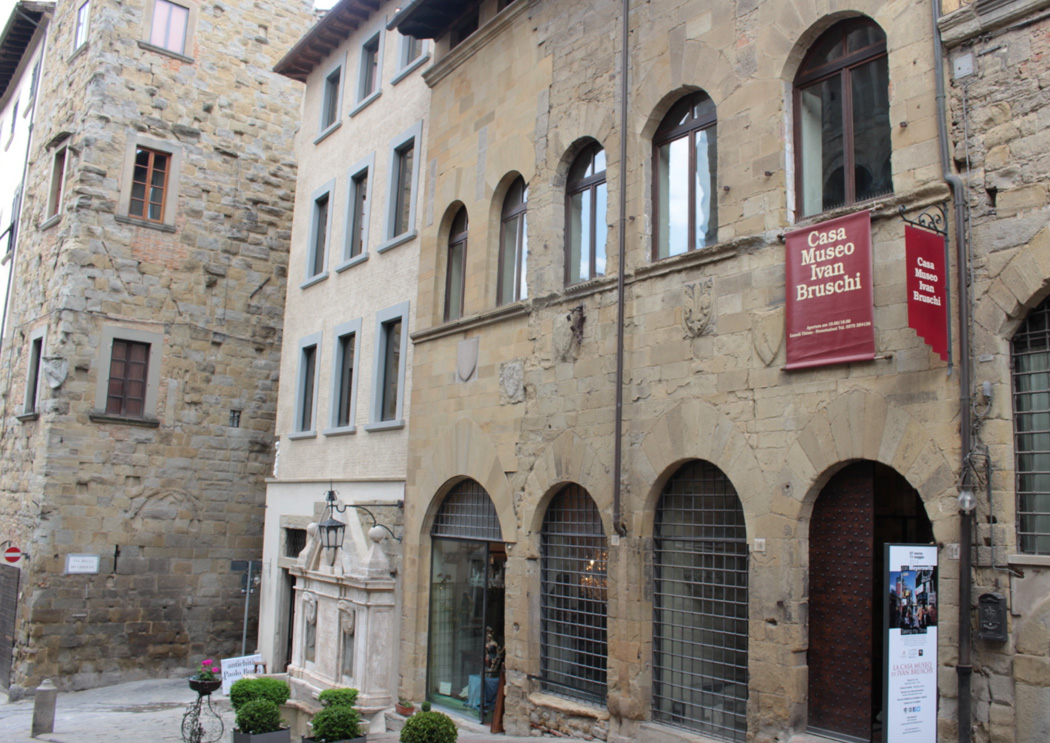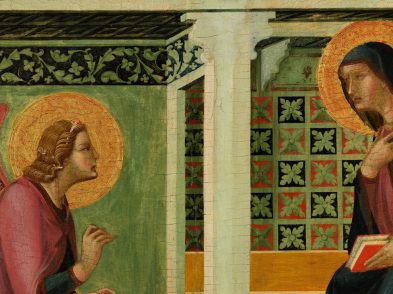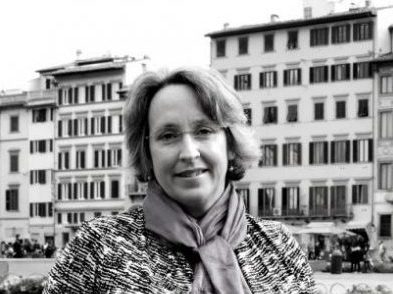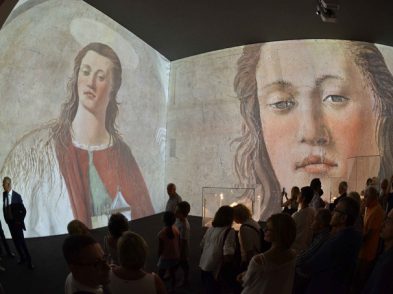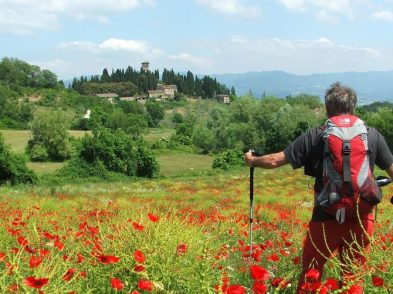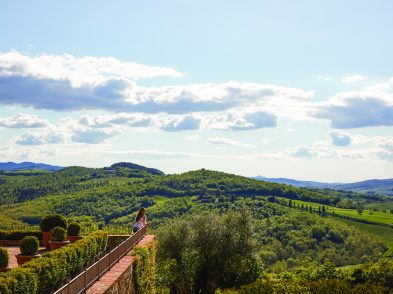Oonagh Stransky, The Tuscan Times correspondent in Arezzo, interviews Elisabetta Bidini, the assistant director of Casa Museo Bruschi to find out what life is like behind the walls and in the courtyards of Arezzo’s most vibrant cultural centre and museum.
Oonagh Stransky: Tell me about your role at the Casa Museo Bruschi.
Elisabetta Bidini: My job is to coordinate all the activities in the museum under the direction of Lucio Misuri. I handle everything from maintenance of the building to welcoming the visitors to the education programs to organizing events and short exhibits. The Ivan Bruschi House Museum is a dynamic cultural reality that offers visitors the opportunity to experience a wide range of artistic events: theater, classical and jazz concerts, contemporary art, photography, cultural conferences. And let’s not forget the fascinating permanent collection! Basically, my colleagues and I are constantly facing new challenges, meeting professional, talented curators and artists, and dealing with new complex situations.
OS: What is your take on the Saracen joust?
EB: I represent an atypical kind of Aretine when it comes to the joust. My family never followed it very much, if only to find out who had won on the day of the event. A few years ago, however, I rediscovered its draw. I saw how fascinated visitors were by the historical reenactment and the enthusiasm of friends and visitors rubbed off on me. It has also led to a sense of pride in the city and for the joust… I should also mention that in the past four years I have been living with someone who is a fervent fan of the Saracino. He never misses any of the practice jousts in piazza Grande and he dreams of being either a musician or a rider in the event. This person also loves to joust in the living room as opposed to in the garden or on the beach… It’s my four-year-old son, Pietro!
OS: What are your three favorite objects in the museum?
EB: In thinking about the Saracen joust, I would have to say that the museum has one of the first, and perhaps even the very first, printed flyer, which is dated 1674. I don’t know if Ivan Bruschi was a keen follower of the joust, but I guess that he appreciated it deeply as a cultural performance emblematic of our city. In our permanent collection, I really love the jewelry boxes and coffers made by the Bottega degli Embriachi out of bone, not ivory. They’re very rare. The head of the Embriachi family understood that working with bone would be better for business. He knew using bone would make his craft stand out, even more than by using an expensive and difficult material to obtain like ivory. The art was knowing how to carve a material as common as bone, but how to make it look as beautiful and precious as ivory. Each of these boxes has a part in wood to which small bone shapes have been applied that they carved with decorative scenes. The Embriachi studios in Florence and Venice became famous throughout 15th-century Europe. They made altarpieces and gifts for many ruling families. At the museum we have two jewelry boxes—the perfect wedding gift for a young noblewoman. I also really love the portrait of Teresa Mozzi with her son, painted by Pietro Benvenuti, from Arezzo, a major figure in neoclassical art. Benvenuti was asked by the Grand Dukes of Tuscany to paint the frescoes of Palazzo Pitti. He was also sent with Canova to France to bring back major pieces of art that Napoleon had taken away. In fact, the French people gave Benvenuti the nickname “l’imballatore” (“the packer”). The painting represents a mother and child in an elegant, albeit unnatural, pose, and displays an amazing attention to the details in her clothing and jewels.
Casa Museo Ivan Bruschi
Corso Italia, Arezzo
Tel. 0575/354126
Check out the Ivan Bruschi House Museum online and stay up-to-date with events on their Facebook page Casa Museo Ivan Bruschi.
Best place for an aperitivo in Arezzo?
Biolento in Piazza San Michele is one of those rare places where it is easy to be pampered by the innate sense of hospitality of owners, Enzo and Maria. Their food is delicious and they care deeply about finding the best ingredients and procure only organic products.
Best gelato in Arezzo?
Gelateria Violetta, which is also my son’s favorite. They have unusual flavors and odd pairings, but unfortunately not much room outside.
Favorite street in the city?
Vicolo Margianello is a small, pedestrian-only street. It’s too narrow for a car to pass. In the old part of the city, its old homes have low stone walls that surround hidden gardens. In the springtime wisteria and jasmine burst forth with their aromas, and it is peaceful and silent. When I was a little girl, on Saturdays, my father would pick me up from school, and we used to walk down it together, me in my white smock and him carrying my satchel.
Which neighborhood do you root for in the Saracen joust and why?
I stand with Sant’Andrea because my best friends when I was a kid were all Sant’Andrea fans. And now I live on a street that is part of that quarter.


